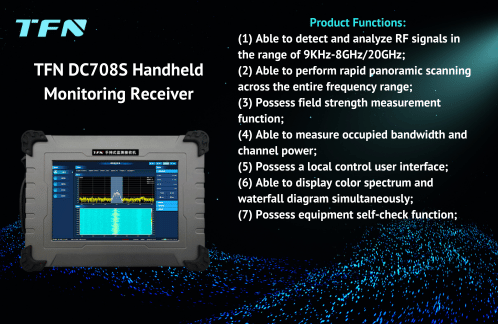How can airports use portable radio monitoring and direction-finding equipment to troubleshoot civil aviation GPS interference signals?
In the field of civil aviation, the stability and accuracy of GPS signals are crucial to flight safety. However, in recent years, with the widespread application of radio technology, GPS interference events have occurred from time to time, posing a serious threat to aviation safety. In order to effectively respond to this challenge, airports and relevant departments use portable radio monitoring and direction-finding equipment to accurately troubleshoot and locate civil aviation GPS interference signals. This article will detail how airports use such equipment to troubleshoot interference signals.
1. Preliminary preparation and planning
1.1 Form a professional team: The airport needs to form a professional team composed of experts in the fields of radio communications, electronic engineering, etc. to be responsible for the troubleshooting of GPS interference signals. Team members must have solid professional knowledge, rich practical experience and good communication and coordination skills.
1.2 Equipment preparation and calibration: Ensure that portable radio monitoring and direction-finding equipment is in good working condition, including radio monitoring vehicles, portable monitoring receivers, antennas, direction finders, etc. Before the investigation, the equipment needs to be calibrated and tested in detail to ensure the accuracy and reliability of the measurement results.
1.3 Information collection and analysis: Collect and analyze relevant data of recent GPS interference events, including the time, location, impact range, flight information, etc. of the interference. At the same time, maintain close contact with airlines, airport towers and other departments to obtain first-hand information and provide strong support for subsequent investigations.
2. On-site investigation process
2.1 Preliminary monitoring and positioning: Use portable radio monitoring and direction-finding equipment to conduct preliminary monitoring in suspected interference areas. Through continuous scanning monitoring, capture and analyze characteristic parameters such as frequency, intensity, and direction of interference signals. At the same time, combined with the data from fixed monitoring stations, preliminarily determine the source direction of the interference signal.
2.2 Accurate direction finding and positioning: Based on the preliminary positioning, a combination of one-way direction finding and two-way direction finding is used to accurately find the direction of the interference signal. First, use the large sound surface of the direction finder for one-way direction finding to determine the approximate direction of the interference signal. Then, by loosening the one-way switch, use the small sound point of the magnetic antenna to swing left and right. When the sound is the smallest, the direction indicated by the magnetic rod is the accurate direction of the interference signal.
2.3 On-site investigation and confirmation: According to the accurate direction-finding results, go to the suspected interference source for on-site investigation. Use a portable monitoring receiver to test the suspected interference source to confirm whether it is the real interference source. During the investigation, attention should be paid to safety protection to avoid unnecessary interference or harm to the surrounding environment and personnel.
3. Interference source processing and follow-up work
3.1 Interference source processing: Once the interference source is confirmed, measures must be taken immediately to deal with it. Illegally installed interference equipment, such as drone countermeasures, weighbridge anti-remote control jammers, etc., must be dismantled and temporarily detained in accordance with the law. At the same time, educate relevant personnel and explain in detail the hazards and legal responsibilities of radio interference.
3.2 Subsequent monitoring and protection: In order to ensure the safety of aviation frequency use, the airport needs to continue to carry out protective monitoring of the interference frequency of civil aviation GPS. Use portable radio monitoring and direction-finding equipment to regularly patrol and monitor suspected interference areas to promptly discover and eliminate potential interference risks. At the same time, strengthen communication and coordination with aviation departments, radio management departments and other units to form a joint force to jointly maintain the order of air waves and aviation flight safety.
Therefore, it is a complex and important task for airports to use portable radio monitoring and direction-finding equipment to troubleshoot civil aviation GPS interference signals. Through the above measures, the threat of GPS interference events to flight safety can be effectively dealt with.
TFN DC708S handheld monitoring receiver has significant advantages in airport troubleshooting of civil aviation GPS interference signals. With its portability, high sensitivity and wide bandwidth coverage (9KHz-8GHz), this device can quickly and accurately locate interference sources, providing airports with timely and effective interference troubleshooting methods. In addition, its powerful electromagnetic signal detection capability can also help airports monitor the radio spectrum environment, prevent potential safety hazards, and ensure smooth and safe civil aviation communications.

If you are interested in the TFN DC708S handheld monitoring receiver, please contact the TFN sales team:
Email: info@tfngj.com
WhatsApp: +86-18765219251
Facebook: https://www.facebook.com/tfnfate/
